How to Choose Good Shrimp and Not Waste Your Money
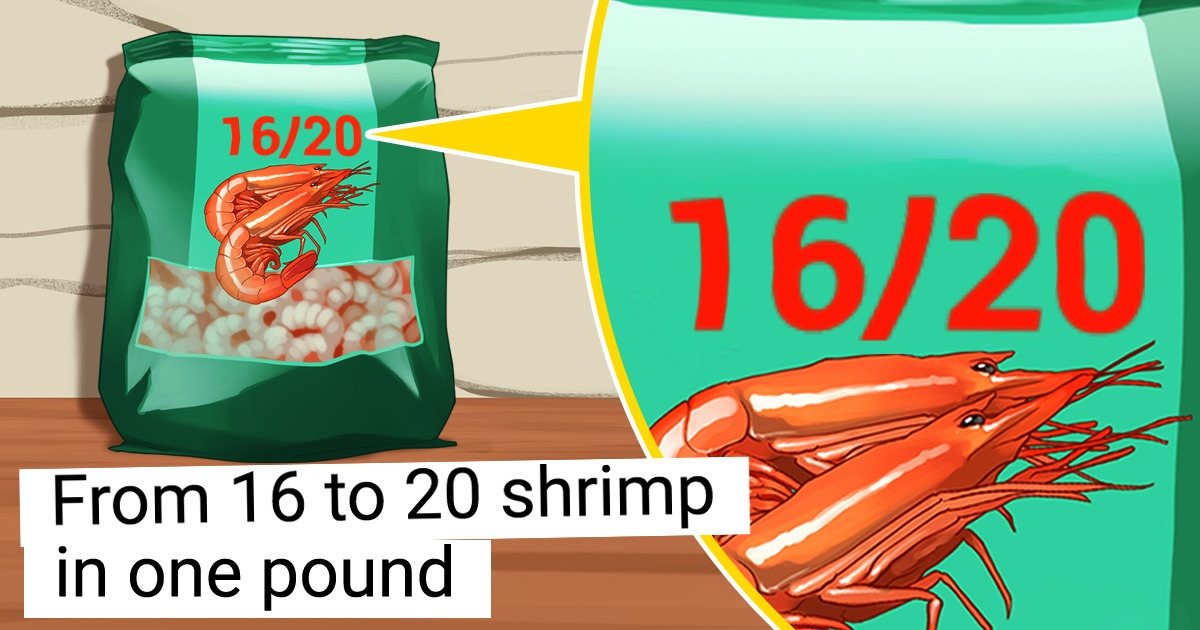
The best choice is shrimp without the head but that is still in a shell. In this case, they can be stored for a long time and remain tasty. But if you are going to buy really fresh shrimp right from the sea, it’s better to buy whole ones and enjoy every piece.
5-Minute Crafts is going to tell you about other things you need to consider when buying shrimp.
Types of shrimp
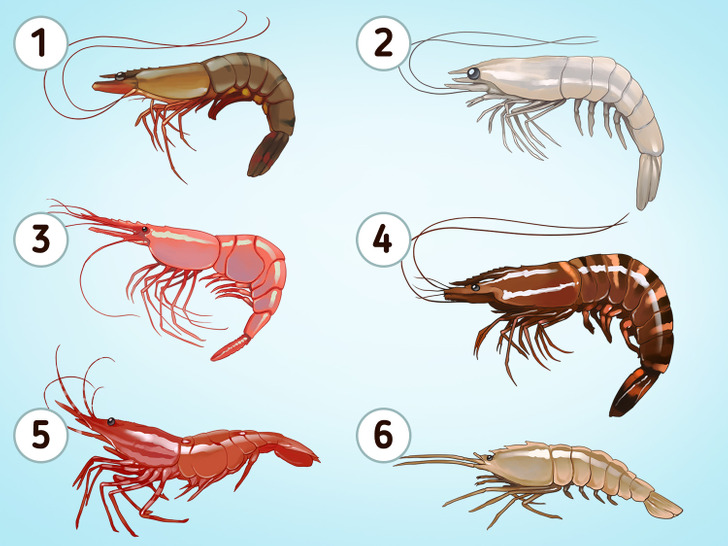
- Brown. Quite small with a purple-ish coloring on the tail. Firm texture, not very strong flavor, distinctive mineral-y iodine shrimp flavor.
- White. Light color and green-ish tail. More tender and sweet.
- Pink. Some of the tastiest. Soft and sweet. The color may be different.
- Tiger. Telltale brown striping on the bodies and rich flavor. They can get enormous in size, up to a foot long. The most popular shrimp in the world.
- Spot. Quite large, up to a foot long. They are sweet and tender.
- Rock. Taste more like a lobster. Firmer than other types but sweeter. Usually sold peeled because of the tough shell.
Why frozen shrimp is better
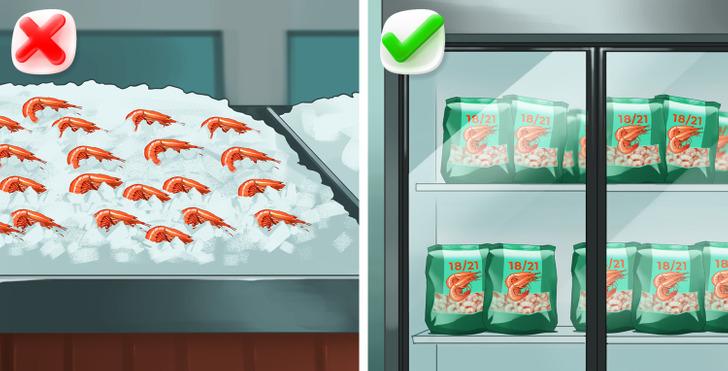
The vast majority of shrimp you can buy in a supermarket were frozen and delivered to the retailer. And then you see “fresh” shrimp on the shelf. In reality, it’s the same shrimp you see in packs in freezers that were just thawed out.
In this situation, there’s no way to find out how long it has been in this state, so it’s better to buy the shrimp that haven’t been defrosted and do it yourself at home. This way, you can control the process and make sure the product is fresh before cooking.
The only exception is when you’re near the ocean, where fresh shrimp live. Fresh shrimp may be stored in water tanks but you have to cook these shrimp right after you buy them.
Types of freezing
There are 2 types of freezing:
- block
- Individually Quick Frozen (IQF)
IQF is better because it causes less damage to the shrimp. Another advantage is that you just can defrost the shrimp you need for cooking and leave the rest.
When buying the product, check the condition of the shrimp through the small window on the pack. Make sure they don’t have freezer burns, or light spots on them. If you see something like this, check another pack. These spots meat that the shrimp have either partially thawed before being refrozen, or have been poorly handled during their freeze.
How to check if shrimp are good for eating
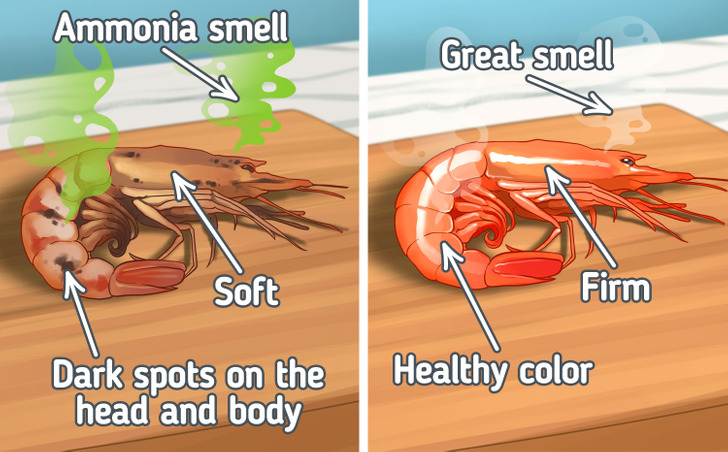
- Flavor. An ammonia flavor is one of the main signs that show the shrimp are bad.
- Texture. If the shrimp are slimy and limp, this is a sign of spoilage.
- Dark spots. This is a telltale sign the product is not fresh. The black spots are called melanosis — they’re the result of the same oxidation process that turns your apples and avocados brown. In other words, they don’t definitively mean that your shrimp are bad, but they do indicate that the shrimp could be better.
Watch out for additives
If you notice that the shrimp have a strange texture even after cooking and/or that they still seem semi-translucent even after turning white, it’s probably because of sodium tripolyphosphate or sodium bisulfite.
These additives are often used to prevent shrimp shells from discoloring which is not dangerous in itself. But they may also be used to make shrimp seem larger than they really are (or to have them “retain moisture”). What this means is that the shrimp absorb water which poorly affects the texture when cooking.
Unfortunately, it may be really challenging to find frozen shrimp without sodium tripolyphosphate. And they are much more expensive. But you’ll be getting when you’re actually paying for rather than shrimp that have been inflated with water.
The size
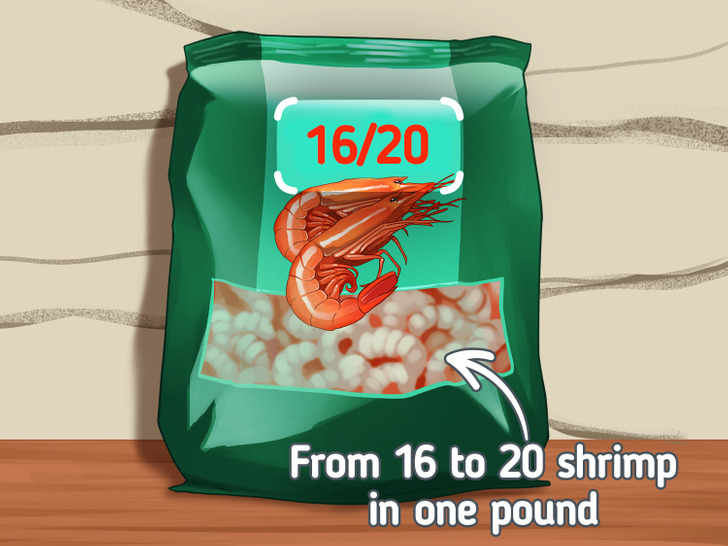
Shrimp can be small, medium, and large. The packaging should have numbers on them and it may be hard to understand what it all means.
In fact, this information is actually quite useful. The number tells you how many shrimp you get in 1 pound. So if you see 16/20, it means that 1 pound of the product has from 16 to 20 shrimp. The smaller the numbers, the bigger the size and vice versa.
The choice of size depends on the meal. Small shrimp are good for fried rice and large ones can be a meal by themselves.
The difference between wild and farmed shrimp
- Farmed shrimp
✅ Widely available. Their production is strictly controlled. There are many options of how they are sold.
❌ When choosing these shrimp, don’t forget that the laws about the antibiotics and chemicals used in the production vary from country to country. Also, these farms have circulation systems that prevent damage to the environment.
- Wild shrimp
✅ Not easy to find but the rich taste is worth it.
❌ Giant nets are used to catch shrimp, which may have a huge negative impact on the ecosystem.
💡 If you want assurance that the shrimp you’re choosing don’t have a negative impact on the environment, choose shrimp that are certified by a credible third party. For wild-caught shrimp, look for MSC or Fair Trade certifications, and for farm-raised, ASC or BAP certification.